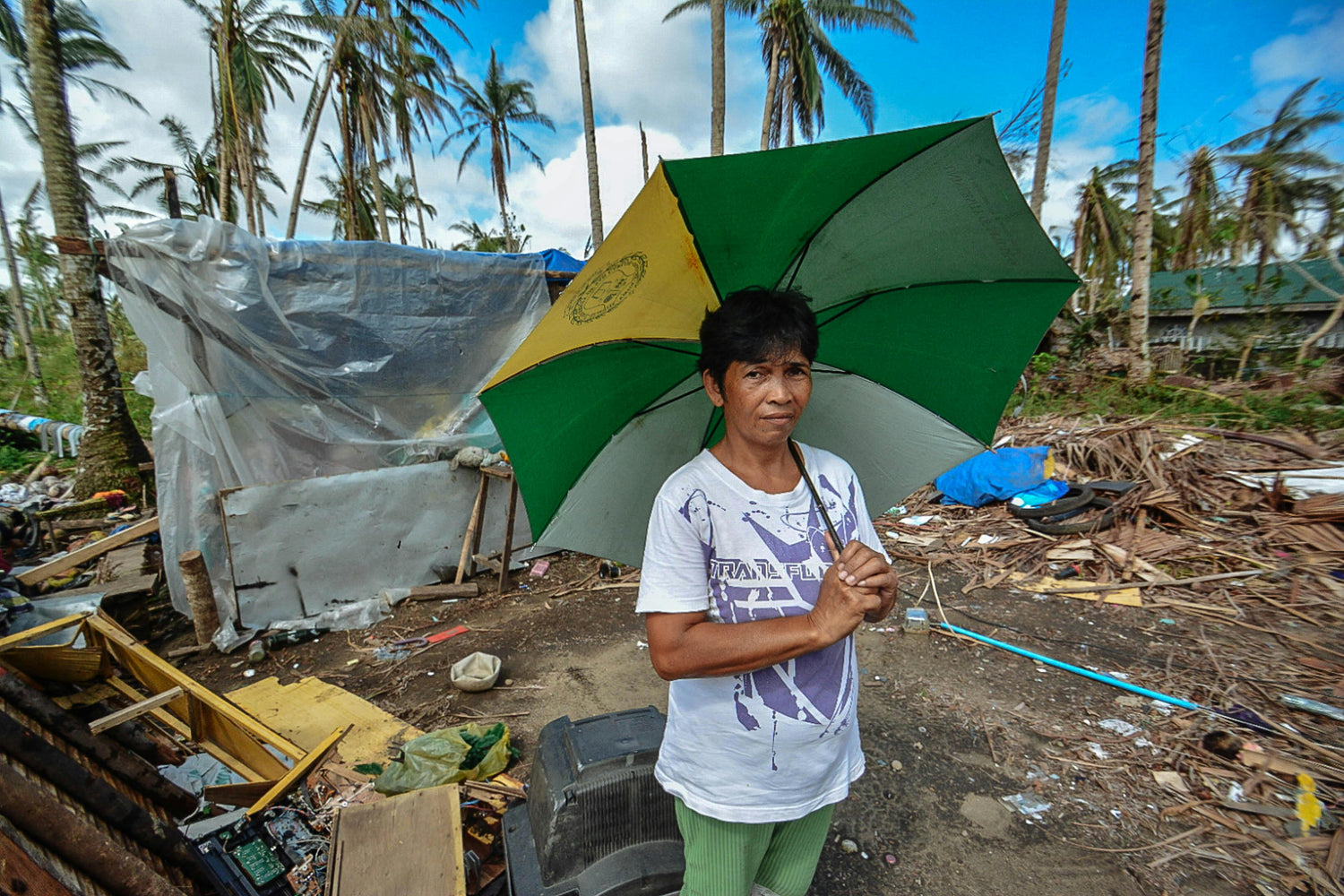YOGA AS A TOOL FOR ADAPTING TO CLIMATE CHANGE
Faced with the challenges of climate change, yoga offers concrete solutions for building resilience, cultivating a deep connection with nature and adopting more sustainable lifestyles. Discover how this age-old discipline can help you live better in a changing world.
Written by Valentine - January 2025
Reducible content
Reading time
Approx. 10 minutes
WHAT YOU'RE ABOUT TO DISCOVER
- How yoga can reduce climate anxiety, by calming the mind and promoting better emotional management.
- How the practice of yoga strengthens our connection to nature, inspiring more environmentally-friendly behavior.
- The role of yoga in promoting sobriety and simplicity, through its philosophical principles such as Ahimsa (non-violence) and gratitude.
- How community yoga helps rebuild after climate disasters, providing a space for support and healing.
- The impact of yoga teachers in raising awareness of climate issues, and their role in promoting sustainable practices.
- Concrete examples of programs and initiatives around the world, where yoga and ecology come together to create innovative solutions.
- "Let's take a look!

THE EXISTENTIAL LINK BETWEEN YOGA AND RESILIENCE IN THE FACE OF CLIMATE CHANGE
Climate change is one of the greatest challenges of our time, affecting both our environment and our mental well-being. In the face of this crisis, yoga is proving to be a powerful tool for cultivating resilience, reducing climate anxiety, and strengthening our capacity to act with awareness.
In 2025, numerous initiatives are highlighting how this age-old practice can help individuals and communities live better in a rapidly changing world.
Example 1: Community yoga groups have emerged in regions particularly hard hit by climate disasters, such as the Philippines, where yoga sessions are organized to help typhoon survivors deal with post-traumatic stress.
Example 2: In Bangladesh, women farmers practice yoga in community circles, where they find mutual support in adapting to changes in their environment and livelihoods.
Example 3: In Italy, after the floods in 2024, volunteers organized free yoga sessions to help residents rebuild their mental and emotional resilience.

YOGA AND MENTAL HEALTH IN THE FACE OF CLIMATE ANXIETY
Climate anxiety, a feeling of fear and powerlessness in the face of the planet's degradation, is affecting more and more people, especially young people.
Yoga, by calming the mind and promoting mindfulness, helps to soothe these emotions and reconnect to the present moment.
Example 1: In Australia, yoga and guided meditation programs have been integrated into schools to help students overcome climate anxiety. One study showed a 35% reduction in students' stress levels after three months of regular practice.
Example 2: In Europe, "Yoga for Climate Hope" retreats welcome environmental activists, offering them a space to refocus, relieve stress and find renewed motivation for their actions.
Example 3: In the USA, a group of scientists working on climate issues take part in weekly yoga sessions in the workplace, which has led to an improvement in their concentration and better management of their emotional load.

A PRACTICE TO STRENGTHEN OUR CONNECTION TO NATURE
By promoting harmony between body and environment, yoga encourages ecological awareness. Through practices such as outdoor sun salutations or meditation in natural spaces, yoga helps practitioners to feel more connected to the Earth and to adopt environmentally-friendly behaviours.
Example 1: In California, "Eco Yoga" sessions are organized in national parks, combining yoga postures with environmental clean-up activities.
Example 2: In France, yoga workshops in the forest, called "bains de forêt yogiques", help participants reconnect with nature while learning simple gestures to reduce their carbon footprint.
Example 3: In Bali, yoga retreats include permaculture courses and guided hikes to raise awareness of local biodiversity and the importance of preserving it.

CULTIVATING SOBRIETY AND SIMPLICITY THROUGH YOGIC PHILOSOPHY
The philosophy of yoga advocates living with less, adopting conscious consumption and cultivating gratitude for what we have.
This minimalist approach resonates perfectly with efforts to reduce our ecological footprint in a world faced with overconsumption.
Example 1: In India, ashrams teaching yoga have integrated workshops on waste reduction and permaculture, encouraging students to adopt more sustainable lifestyles.
Example 2: In Berlin, yoga studios organize "Minimalist Yoga Markets", where participants can exchange unused items, reducing waste while practicing the spirit of ahimsa (non-violence) towards the planet.
Example 3: In Spain, yoga festivals promote eco-responsible lifestyles, with educational stands on upcycling and the use of yoga equipment made from recycled materials.

COMMUNITY YOGA TO REBUILD AFTER CLIMATE DISASTERS
When climate catastrophes strike, affected communities often have to rebuild not only their infrastructure, but also their collective resilience.
Yoga, through its communal practice, offers a space for mutual support and healing.
Example 1: After the devastating fires in the Amazon, local organizations set up free yoga classes for residents. These sessions included breathing exercises and deep relaxation to help participants overcome their trauma and regain a sense of stability.
Example 2: In Indonesia, after a tsunami, temporary yoga camps were set up to provide a safe space for children and teenagers, combining simple postures with moments of sharing to rebuild their confidence.
Example 3: In Haiti, after an earthquake, international yogic volunteers taught calming breathing techniques to victims to help them deal with post-disaster anxiety.

TEACHING YOGA FOR A SUSTAINABLE FUTURE
In 2025, yoga teachers are playing a key role in raising awareness of climate issues. They integrate discussions on sustainability into their classes and encourage their students to make a commitment to the planet, reinforcing the link between personal practice and collective action.
Example 1: Events like "Global Yoga Climate Action Day" bring together thousands of practitioners around the world to promote concrete action for the planet, while practicing yoga together.
Example 2: In the UK, yoga teacher training courses now include modules on sustainability, encouraging future teachers to integrate environmentally-friendly practices into their studios, such as the use of biodegradable mats.
Example 3: In Africa, local yoga schools work with NGOs to teach their students regenerative farming techniques alongside their practice, combining personal development and environmental sustainability.
Thanks for this timely post!
HEALTHY MIND, HEALTHY LIFE
Valentine's bio
-

VALENTINE
1994, Reunion Island, Mauritius, a Life of the Indian Ocean and Yoga
Since childhood, this intrepid traveler has crisscrossed the globe, leaving her footprints on beaches the world over.Passionate about surfing, scuba diving and sailing, she has made the ocean her playground and source of inspiration.
The freedom of the waves, the serenity of the ocean depths and the wind in his sails have punctuated his journey, always guided by a quest for connection with nature.
Through her explorations, yoga has become more than a practice for her - it's a way of life.
Between morning surf sessions and meditative sunsets, she has found in yoga a perfect balance of strength, fluidity and self-awareness.
Today, she combines her passion for water sports with teaching yoga and is part of the Yogaterrae team, here in France, in the South-West and often remotely :)
This adventuress is a true source of inspiration for anyone who aspires to live in harmony with their body and nature.
Through her stories of incredible experiences, she invites everyone to open up to a world where every wave, every breath and every posture is a celebration of life.



